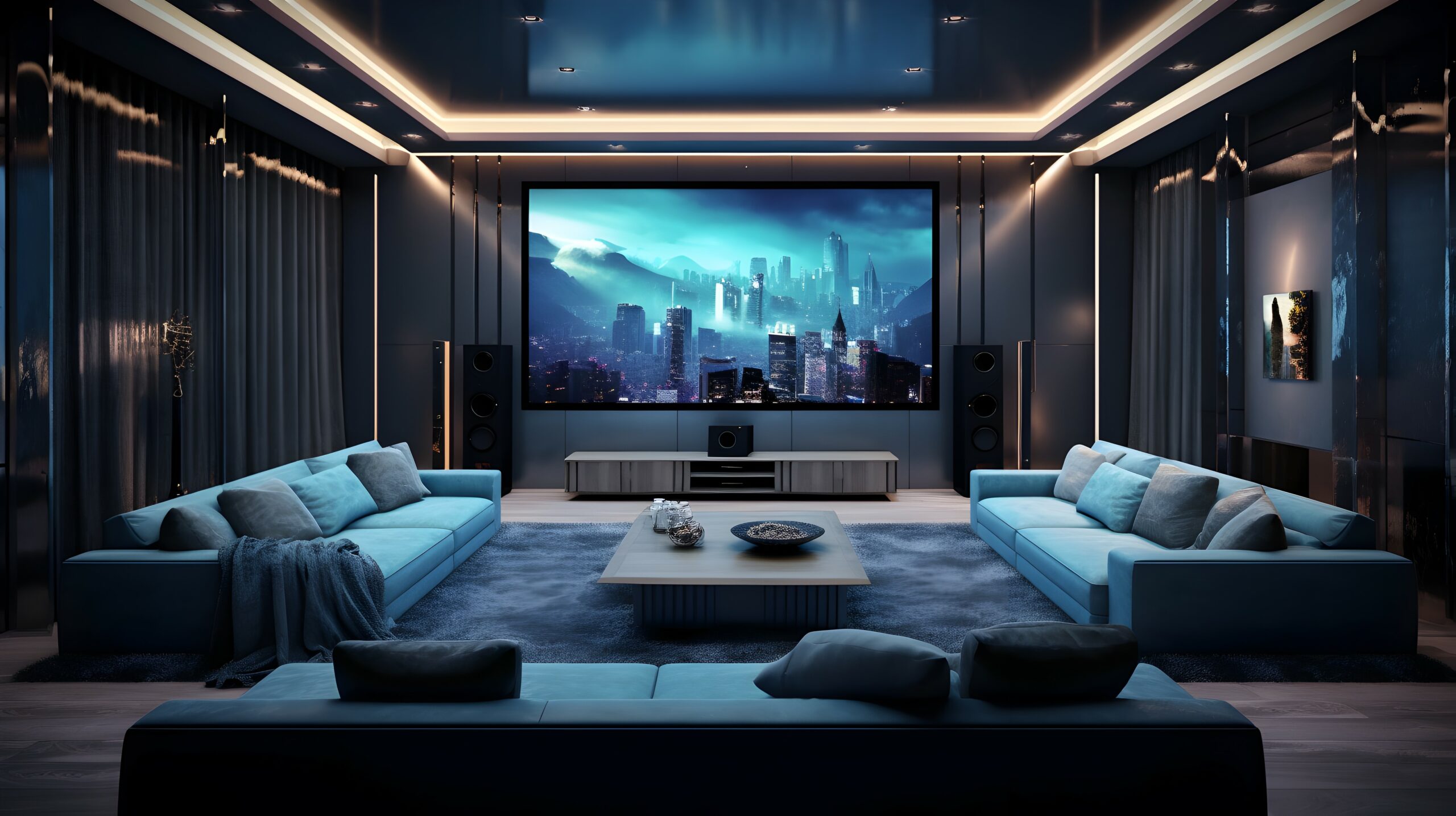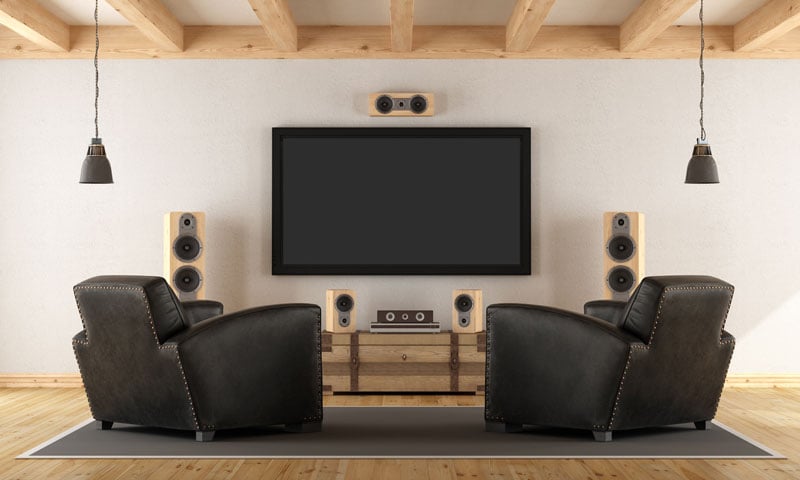Home Theater 101: Every Little Thing You Need to Know for a Motion Picture Experience in your home
Developing a home cinema that measures up to the cinematic experience of a commercial theatre involves mindful consideration of multiple components, consisting of display option, sound systems, and space design. Whether you are contemplating the suitable display size or the complexities of surround audio, recognizing these principles is vital.
Picking the Right Screen
When establishing a home theater, choosing the ideal screen can make or break the watching experience - tampa home theater. The screen works as the centerpiece of your setup, affecting picture quality, viewing angles, and total aesthetic. Trick aspects to take into consideration include display type, resolution, and dimension
First, establish the proper screen dimension based on your space dimensions and seating range. A basic guideline is to rest roughly 1.5 to 2.5 times the diagonal display size for optimum viewing. Next off, choose between different screen types, such as fixed-frame, motorized, or retracting displays, each offering distinctive advantages. Fixed-frame screens typically give the ideal picture high quality, while mechanized options allow for flexibility precede usage.
Resolution is an additional important factor. For a genuinely immersive experience, take into consideration a screen developed for 4K or perhaps 8K content, making certain sharpness and clearness. Furthermore, take into consideration the screen's gain, which impacts brightness and comparison; a greater gain can boost brightness in well-lit rooms, while a lower gain may be better for darker atmospheres.
Picking Audio Equipment
Audio devices is a vital part of any type of home cinema system, significantly improving the general watching experience. The choice of audio gear can figure out the depth, clarity, and immersion of sound, essential for developing a motion picture atmosphere.
When picking audio tools, take into consideration a border audio system, which usually includes a receiver, multiple speakers, and a subwoofer. A 5.1 or 7.1 network system is recommended, where the initial number represents the audio speakers and the second the speaker, providing an immersive soundscape. The receiver is the heart of the system, handling sound and video signals, and need to sustain contemporary layouts like Dolby Atmos for an enhanced spatial experience.
Quality audio speakers are essential; search for designs that use a well balanced audio account with great bass reaction. Floor-standing speakers can produce richer audio, while bookshelf choices conserve area. Additionally, consider wireless alternatives for simplicity of installation, although wired systems frequently deliver superior efficiency.

Optimum Seating Arrangements
Creating a perfect home movie theater experience pivots dramatically on optimum seating setups. The arrangement of seats plays an important function in both comfort and viewing top quality, directly impacting the total motion picture experience.
First, think about the screen size and checking out distance. A typical standard is to position seats at a range around 1.5 to 2.5 times the angled dimension of the screen. This ensures an immersive experience without stressing the eyes.
Next, elevation is essential. If your seating remains in a tiered style, the back rows need to be more than the front to avoid blockages. For flat seating, make certain that the front row is not as well close to the display, which everyone has a clear line of view.
Additionally, take into consideration the setup in terms of social characteristics. Group seats can boost the communal experience, while specific seats may be chosen for individual viewing.

Last but not least, prioritize convenience with ergonomic seating that sustains prolonged watching durations. Incorporating reclining chairs or supported seats can dramatically improve the experience, making the home theater a recommended destination for both entertainment and leisure.
Lighting and Ambiance
Efficient illumination and ambiance are crucial elements of a properly designed home movie theater, as they significantly affect the watching experience. The right lighting can improve the motion picture feeling, while poor options can detract from it. For ideal outcomes, take into consideration a layered lights method that includes ambient, job, and accent lights.
Ambient illumination supplies basic lighting, guaranteeing that the room is not completely dark, which can strain the eyes. Dimmer switches are extremely recommended, enabling changes based on the material being checked out. Job lights, such as wall sconces or flooring lights, uses useful illumination for activities like analysis or browsing the space without interfering with the he said overall ambience.
Accent lighting can be used to highlight building attributes or develop focal factors, adding depth and rate of interest to the area. LED strip lights behind displays or along shelves can offer a refined glow that improves the visual experience without overwhelming the visitor.

Wiring and Installation Tips
A well-planned wiring configuration is crucial for accomplishing optimal performance in your home movie theater system. Proper circuitry not only ensures top quality audio and video signals but also improves the general visual of your area. Begin by drawing up your layout, determining where each element will be put, including your screen, speakers, and receiver.
When picking cords, prioritize top notch, suitably evaluated wiring to reduce signal loss. HDMI cords ought to be utilized for video clip links, while speaker cord ought to match the requirements of your audio speakers and amplifier. Opt for in-wall ranked cable televisions to adhere to safety and security standards and preserve a clean look.

Verdict
In summary, creating an outstanding home cinema experience calls for mindful consideration of various elements, including screen selection, audio devices, seating plans, lights, and wiring. By prioritizing these elements, a cinematic environment can be effectively duplicated, enabling for immersive checking out experiences that equal standard movie theater setups.
Producing a home movie theater that matches the cinematic experience of a commercial theatre involves careful factor to consider of multiple components, consisting of display choice, audio systems, and space layout.When setting up a home cinema, picking the ideal screen can make or break the viewing experience. Next off, select in between various display kinds, such as fixed-frame, motorized, or retractable displays, each offering distinct benefits. For a genuinely immersive experience, think about a screen designed for 4K or also 8K material, making sure sharpness and clarity.In recap, producing an outstanding home cinema experience calls for careful consideration of different aspects, including display selection, audio tools, seating plans, lighting, and circuitry.